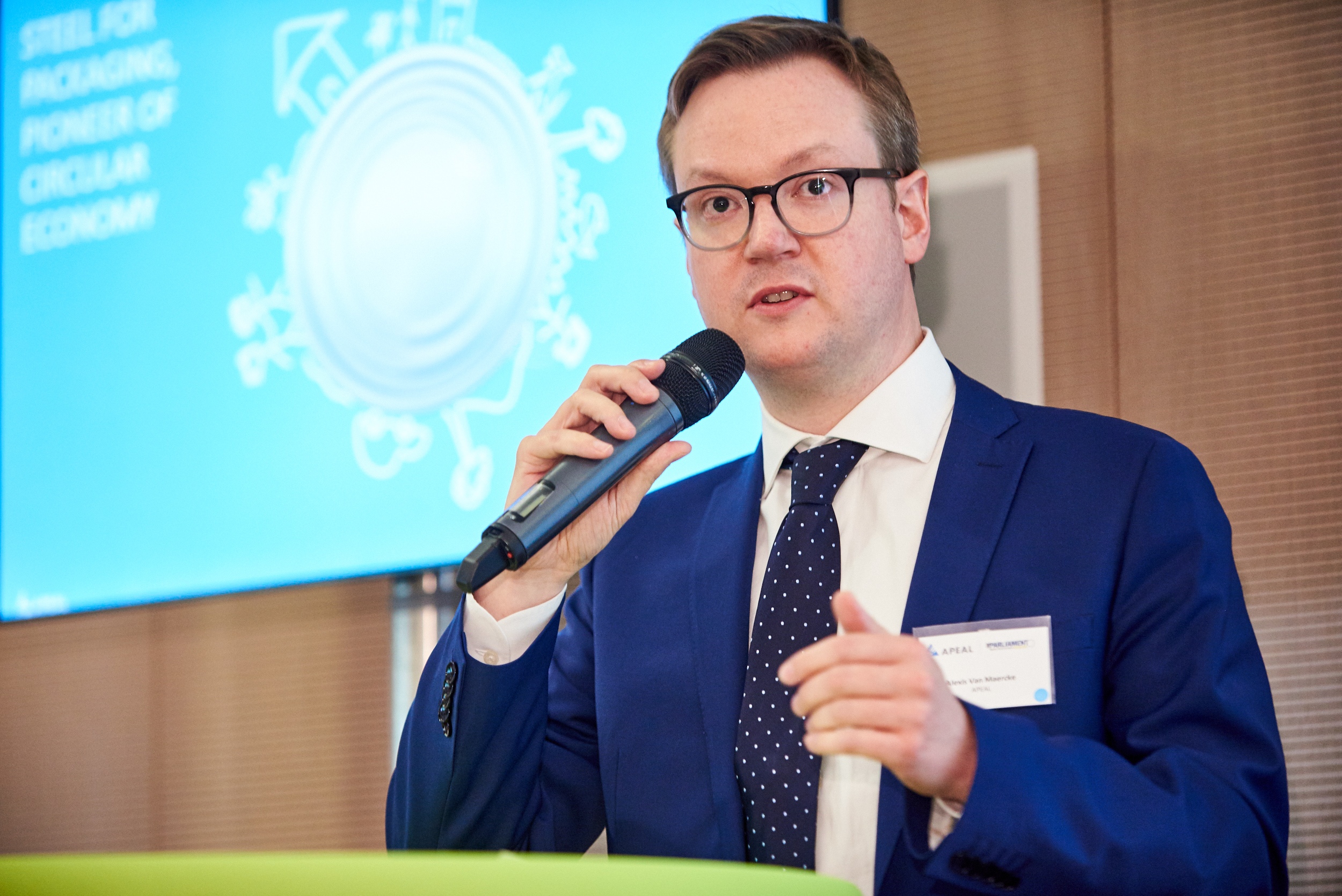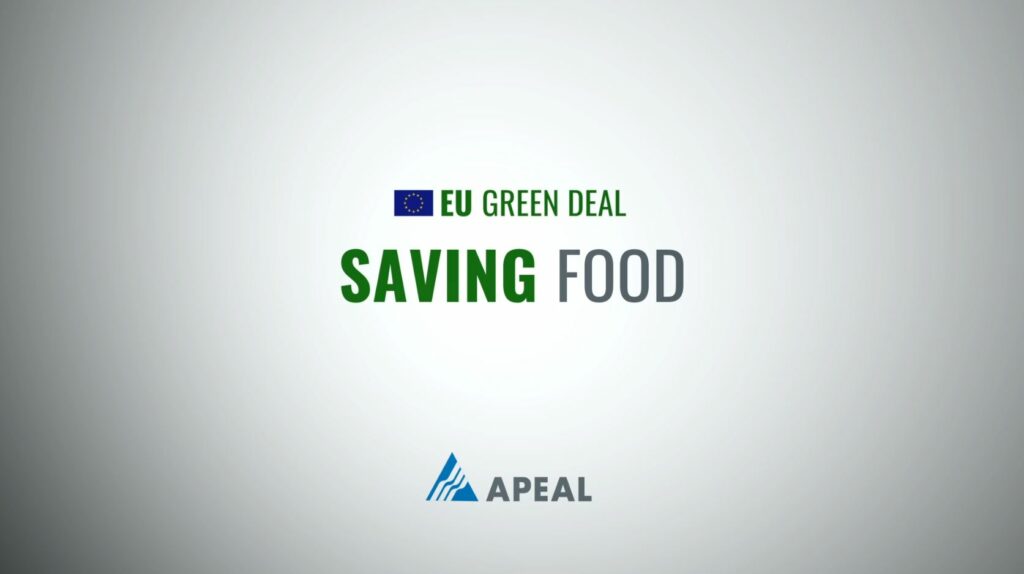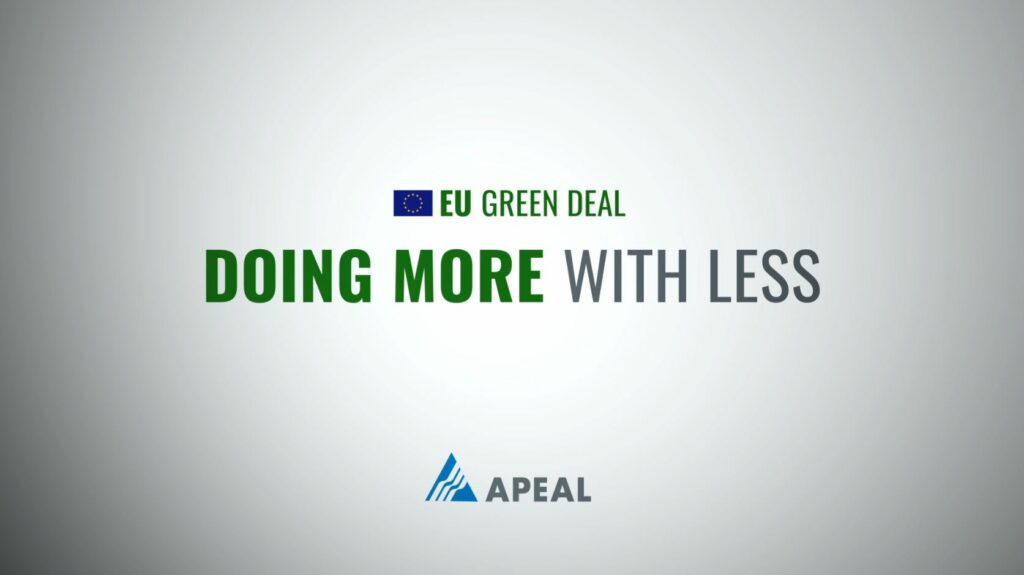#23.02.2021 Steel for packaging and the European Green Deal: a circular success story
By Alexis Van Maercke, Secretary General.
The European Green Deal aims to turn Europe into the first  climate-neutral continent by reducing its greenhouse gas emissions to net zero by 2050.
climate-neutral continent by reducing its greenhouse gas emissions to net zero by 2050.
Brands, manufacturers and consumers could be forgiven for thinking individual actions will have little impact in realising this colossal ambition. But choosing steel packaging is one small step that could mean a giant leap in making the European Green Deal a success.
At the heart of the Deal is the circular economy and the Circular Economy Action Plan (CEAP 2.0), which includes a ‘sustainable products’ policy and a wealth of measures along the entire life cycle of products, such as initiatives to support circular design.
The idea of a circular economy is to keep resources in use for as long as possible, without relying on and depleting raw materials. Multiple recycling is key to this process, as is the increased use of permanent materials whose inherent properties do not change, regardless of the number of times they go through a recycling process.
Once produced, if these materials are properly collected and processed at the end of their useful life, they will become the valuable resource for endless production loops. Such materials are and will remain at the heart of a successful circular economy.
All recycled steel packaging is reused to make new steel, which contributes to the fact that more than 75% of the steel ever made is still in circulation today.
Steel is, in fact, the most recycled material in the world, with 82.5% of steel packaging recycled across the EU.
This is in part because of its unique magnetic properties which mean it can be easily recovered from waste streams. In Europe, recycling infrastructures for steel packaging have been in place for a long time, so are well-established and highly efficient.
 The dual challenge of achieving a more circular economy and driving greater sustainability across all packaging formats has positioned “real recycling” high on the political agenda.
The dual challenge of achieving a more circular economy and driving greater sustainability across all packaging formats has positioned “real recycling” high on the political agenda.
EU legislation adopted in 2018 means higher recycling targets will take effect for most packaging materials in 2025, along with the introduction of specific legislation limiting non-recycled single use plastics.
Secondary legislation, under implementation by member states, will focus on a more harmonised recycling calculation point as well as new reporting obligations.
But waste packaging is not the only issue high on the political and public agenda. In the EU, around 88 million tonnes of food waste are generated annually.
According to Sara Menker, founder and chief executive of agricultural data technology company Gro Intelligence, by 2027 the world could be facing a 214 trillion calorie deficit. This means that in less than a decade there may not be enough food to feed the planet.
The environmental impacts of food waste throughout the food supply chain are also widely recognised. Around a quarter of man-made greenhouse gas emissions are created by food waste. In fact, if food waste was a country, it would be ranked third after the USA and China in terms of greenhouse gas production.
When food ends up in landfill it rots and degrades, producing large amounts of methane, which is roughly 30 times more potent than carbon dioxide as a heat-trapping gas.
But by making smarter packaging choices we can extend the shelf-life of food, retain its nutritional value and prevent wastage at every stage from farm to fork.
When packaged in steel, food can be picked at the height of its freshness, retaining valuable vitamins and minerals. Product loss during transport and handling can also be minimised thanks to steel’s unrivalled strength. Steel packaging also reduces waste at household level, thanks to portion-sized packs and a long shelf life.
Steel for packaging production is all about sustainable processes. Since 1960 the European steel industry has halved its energy usage and CO2 emissions.
Recycling of used steel saves resources and CO2. Recycling one tonne of steel saves more than two tonnes of raw materials and helps to reduce CO2 emissions. In fact, each item of recycled steel packaging saves over 1.5 times its weight in CO2.
 Additionally, we have been making steel packaging much thinner and lighter.
Additionally, we have been making steel packaging much thinner and lighter.
Over the last 30 years a 3-piece food can has become 29% lighter and the weight of a steel beverage can has dropped by a third. This not only makes the production of steel packaging more resource-efficient, but reduces emissions associated with transport.
All this means steel for packaging has a vital role to play in helping deliver a greener future for Europe and help Europe achieve its vision of an efficient and circular economy.
